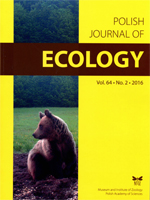The cell size variations in woody plants in various environments are not well known, and the underlying mechanism has not been fully analyzed. 2. The current study focused on the intraspecific and interspecific size variations in palisade cells occurring in 76 woody species along an elevation gradient (1800–4500 m a.s.l.) on Gongga Montain (1400–7552 m a.s.l.) in southwest China, which included tropical and subtropical genera of broad-leaved forest flora including Salix hyperba as the species occurring on all elevations. We hypothesized that cell size is regulated by alterations in width-length scaling (L-D ratio) to mediate a surface-to-volume ratio (S/V) most suitable for the prevailing environmental conditions. 3. It was observed that cell size co-varied similarly with environmental conditions at the conspecifics, congenerics, and interspecifics levels investigated. Cell sizes decreased among conspecifics, or increase among congenerics and interspecifics via negative or positive scaling of width-length ratio at the cellular level. However, this dichotomously differing tendency may be ecologically constrained by both a cost-increasing and benefit-diminishing mechanism of cell dimension with increasing elevation at the species level, implying a ‘middle way’ strategy for species to stressed environments. 4. The implications of the results for regional floristic evolution are discussed.
How to translate text using browser tools
1 June 2016
Ecological Strategy at Cell Size Level to Respond to Stressed Environments
Haiyang Wang,
Yanfang Liu,
Hong Chen
ACCESS THE FULL ARTICLE

Polish Journal of Ecology
Vol. 64 • No. 2
June 2016
Vol. 64 • No. 2
June 2016
adaptive strategy
areal type of plants
cell size variation
elevation
Middle Way
Salix hypera
Surface-to-volume ratio




